Why is it that certain ideas become outdated more quickly than others – even if they are especially designed to show what it is to be ‘up to date’ as in Stanley Cavell’s writings on modernism in art? Does this have to do with the general wasting away of ‘ordinary language philosophy’ of which Cavell is a major proponent? (see T.P. Uschanov, “The Strange Death of Ordinary Language Philosophy”, 2002, online) Could it be that those ‘methods’ applied to art naturally share the same fate? Or are there more general laws of obsolescence at work? How do ‘logics die’ even when they are not logical?
A consequence of Cavell’s imposing sincerity of intention or meaning upon the artist and the work of art is his claim to expose certain works as fraudulent. (in: “Music Discomposed”, Must we mean what we say?, Cambridge 2003) He describes this claim as “empirical”, arrived at by his experience with works of art and artists of his time – ‘contemporary with the claim’. He thus applies it only to what he judges to be modern art – not to the past history of art, nor art in an atemporal plane. Cavell’s criteria are not transcendental in the Kantian sense, meaning the apriori conditions of the possibility of aesthetic experience; he seems to be demanding of modern art that it make it possible for him to ‘believe’ it.
His case for sincerity or fraudulence in art, something in itself intangible, not perceivable in the work,– rests on his particular use of ‘intending’ or ‘meaning’ in a work of art. He borrows this idea of art and sincerity from Tolstoy’s “What is Art?”. The writings of Krenek on certain theoretical aspects of the “new music” are his main ‘exhibit’. Cavell dismisses these writings as ‘fraudulent’ and by a vertiginous leap in his argument concludes that Krenek’s music is also fraudulent. It is Krenek’s “philosophizing” which annoys Cavell – composers should compose and leave ‘philosophizing’ and magazine articles to the ‘professionals’. But Cavell has nothing to say about Krenek’s music – or even how it reflects his ‘fraudulent’ theories. This does not prevent him though from appropriating Krenek’s themes of “composition, improvisation and chance” as the structure for his own musings on composition and the modern. (“But I was discussing some writing now current about the new music. Perhaps I can say more clearly why it leads, or has led me, to these various considerations by looking at three concepts which recur in it over and over – the concepts of composition, improvisation and chance.”
“Music Discomposed”, op. cit. p. 193)
Against this idea of an artist or work of art meaning or intending something ‘x’ which he has to convey outside of the work itself to Cavell or any other interrogator, I would suggest the work of art has the form of an axiom and of a fact or as Badiou would say – an event. Cavell or any other critic is only an adjunct of the art event – in this case of Krenek’s music and his reflexive process of composition.
Cavell’s ‘meaning’ follows art and not the other way around. The art axiom creates a disruption or a voiding of received meaning, what time or history do in other ways. The intention of the artist is that the work exist – nothing more or less. If it exists it is not fraudulent. Something always happens.
Maurice Blanchot who like Krenek questions the traditional romantic idea of ‘inspiration’ - says about the literary work of art in “The Space of Literature”: “However, the work – the work of art, the literary work – is neither finished nor unfinished: it is. What it says is exclusively this: that it is – and nothing more. Beyond that it is nothing.(…)The work is without any proof, just as it is without any use. It can’t be verified.” (University of Nebraska Press, 1982, p. 22)
Cavell insists on some other meaning, not expressed by the work itself, which must satisfy his demand for sincerity. But he only demands that ‘modern art’ pass his sincerity test. ‘Traditional’ or established art is exempt. Amongst the moderns – John Cage and Anthony Caro belong to Cavell’s protected species – perhaps on advice from the art critic Michael Fried. Although certainly Cavell would not deny that even the judgements of ‘traditional art’ are in a constant state of flux. What do Wordsworth’s effusions mean today even for the diehards of English romantic poetry or Ruskin’s condemnations of ‘the pestilential art of the Renaissance’ for neo-Victorians? And why is it that only “(…)the experience of the modern is one which itself raises the question of fraudulence and genuineness(…)”? (“A Matter of Meaning It”, op. cit. p.214) Something Cavell takes to be “an obvious but unappreciated fact” (ibid.) – how is something both ‘obvious’ and ‘unappreciated’? But if it were an obvious fact (and perhaps it is) - then the “experience of the modern” in philosophy is also overshadowed by questions of the fraudulent and the genuine…
Cavell is a Beckmesser who says what I cannot ‘hear’ or ‘see’ does not exist. Lurking in the background of his not ‘hearing’ and not ‘seeing’ of certain modern art is Cavell’s presumption that art and religion are closely related if not identical – and that they are both exposed to belief or disbelief. He expresses this negatively: “For religious experience is subject to distrust on the same grounds as aesthetic experience is (…)”(“Music Discomposed”, op. cit. p.191) He thus transfers the ‘tests’ of his ‘empirical’ claims to the religious sphere, deftly evading verifiability. Once safely ensconced in religious sensibilities he then claims that modern art with all the emotions it arouses (especially hostility and disgust) must be treated as one does persons not objects. “In emphasizing the experiences of fraudulence and trust as essential to the experience of art, I am in effect claiming that the answer to the question “What is art?” will in part be an answer which explains why it is we treat certain objects, in ways normally reserved for treating persons.”(op. cit. p. 189)
Paradoxically, although the universal tendency of modern art is towards abstraction or the ‘unhuman’ (especially music – the subject of his remarks) Cavell in his claims about fraudulence and genuineness (sincerity) in art retreats in the opposite direction - further into anthropomorphism. (Cavell has imperceptibly widened his net to include all of art without further justifications.)
His “aesthetic experiences” interrogate the ‘conscience’ of the artist. Avant-garde art though defines itself as an ‘experimental’ production of new existences (art bodies). His rules for modern art are mere private evaluations originating in incommunicable quasi-religious experiences – they have no hold on what art is.
One could say that Cavell is himself a victim of his desire to name everything at any price, a drive or obsession which Badiou calls ‘evil’. How else is one to regard his insatiable lust for meaning of meaning of meaning and so on endlessly from a work of art? Is this a Wittgensteinian stance? Wittgenstein saw all meaning rather as indeterminate and necessarily admixed with elusive degrees of falsehood (fiction, myth). In a similar spirit Wittgenstein confided to his publisher von Ficker that the most essential part of the Tractatus logico-philosophicus is what he had not written. Would Cavell ‘the new Wittgensteinian’ have demanded that he spell it all out for him?

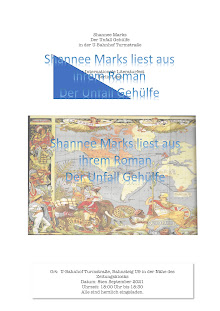
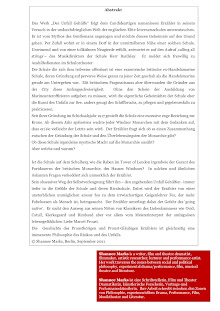
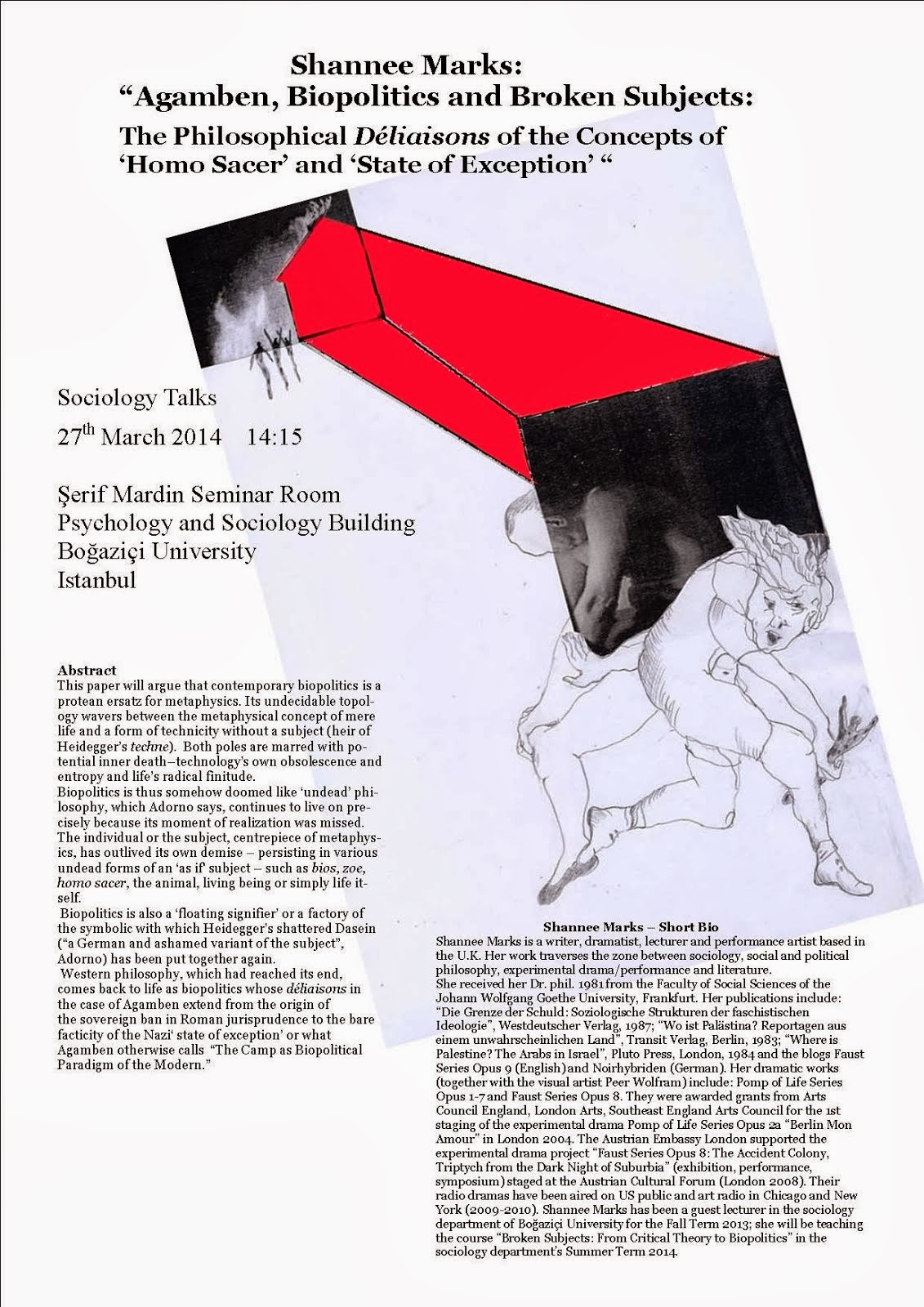


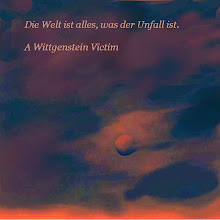




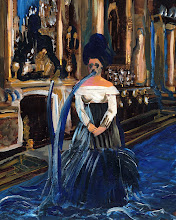


















No comments:
Post a Comment